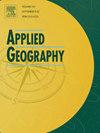Provincial localization framework for SDGs in China: Enhancing support for sustainable governance
IF 4
2区 地球科学
Q1 GEOGRAPHY
引用次数: 0
Abstract
The Sustainable Development Goals (SDGs) represent a globally accepted set of objectives, whose success heavily relies on localized implementation. Despite broad consensus, there is a notable lack of structured methodologies for assessing SDG integration at the local level. To address the knowledge gap, we proposed a novel framework for evaluating SDG integration at the provincial level, supported by an in-depth analysis of Chinese provinces from 2006 to 2021. Our framework allows for a more nuanced assessment by selecting regionally aligned indicators, establishing clear benchmarks, and evaluating SDG performance across multiple dimensions. A key finding is the necessity of utilizing at least three distinct indicators to capture the complexity of each SDG. Moreover, our approach—combining average targets with regional equity considerations—produces more consistent and meaningful results for local governance. By 2015, China's provincial SDG implementation surpassed key milestones, but regressions were observed in SDG12 (responsible consumption and production), SDG13 (climate action), SDG14 (life below water), and SDG15 (life on land), underscoring the need for renewed efforts. This research distinguishes itself by offering a localized, equity-driven assessment model that provides fresh insights into SDG progress, emphasizing the importance of continuous monitoring at sub-national levels and the need for tailored policy interventions to address regional disparities in sustainable development.
中国可持续发展目标省级本土化框架:加强对可持续治理的支持
可持续发展目标(sdg)是一套全球公认的目标,其成功在很大程度上依赖于本地化的实施。尽管达成了广泛共识,但明显缺乏评估地方一级可持续发展目标整合情况的结构化方法。为了解决这一知识鸿沟,我们提出了一个评估省级可持续发展目标整合情况的新框架,并通过对2006年至2021年中国各省的深入分析提供支持。我们的框架允许通过选择与地区一致的指标、建立明确的基准以及跨多个维度评估可持续发展目标的绩效来进行更细致的评估。一项重要发现是,必须使用至少三个不同的指标来反映每个可持续发展目标的复杂性。此外,我们的方法——将平均目标与地区公平考虑相结合——对地方治理产生了更一致和有意义的结果。到2015年,中国省级可持续发展目标的实施超过了关键里程碑,但在可持续发展目标12(负责任的消费和生产)、可持续发展目标13(气候行动)、可持续发展目标14(水下生物)和可持续发展目标15(陆地生物)中出现了倒退,这突显了需要重新努力的必要性。本研究的独特之处在于提供了一个本地化的、公平驱动的评估模型,为可持续发展目标的进展提供了新的见解,强调了在国家以下各级持续监测的重要性,以及有必要采取有针对性的政策干预措施,以解决可持续发展中的区域差异。
本文章由计算机程序翻译,如有差异,请以英文原文为准。
求助全文
约1分钟内获得全文
求助全文
来源期刊

Applied Geography
GEOGRAPHY-
CiteScore
8.00
自引率
2.00%
发文量
134
期刊介绍:
Applied Geography is a journal devoted to the publication of research which utilizes geographic approaches (human, physical, nature-society and GIScience) to resolve human problems that have a spatial dimension. These problems may be related to the assessment, management and allocation of the world physical and/or human resources. The underlying rationale of the journal is that only through a clear understanding of the relevant societal, physical, and coupled natural-humans systems can we resolve such problems. Papers are invited on any theme involving the application of geographical theory and methodology in the resolution of human problems.
 求助内容:
求助内容: 应助结果提醒方式:
应助结果提醒方式:


